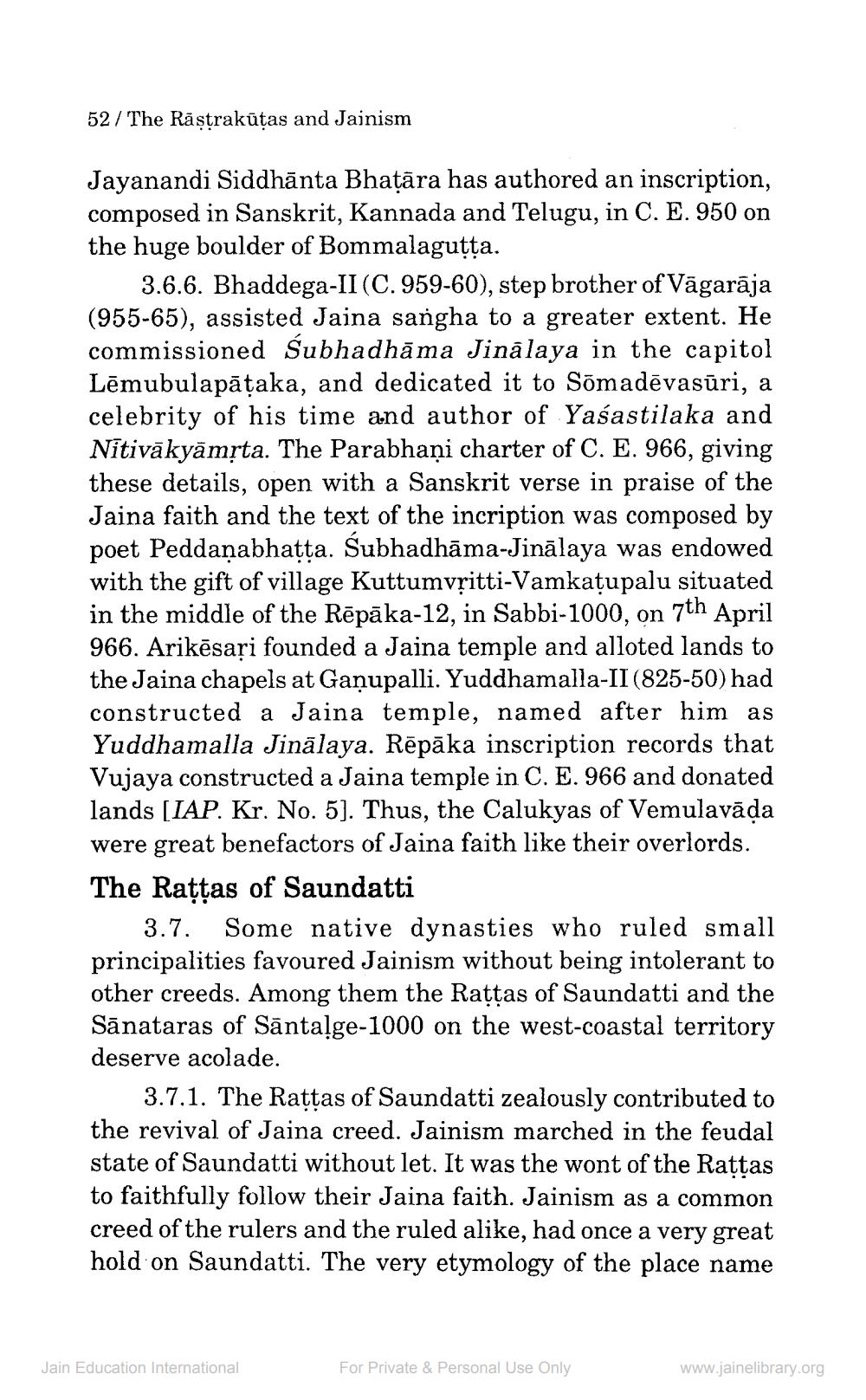________________
52 / The Rāstrakūtas and Jainism
Jayanandi Siddhānta Bhatāra has authored an inscription, composed in Sanskrit, Kannada and Telugu, in C. E. 950 on the huge boulder of Bommalagutta.
3.6.6. Bhaddega-II (C.959-60), step brother of Vāgarāja (955-65), assisted Jaina sangha to a greater extent. He commissioned Subhadhāma Jinalaya in the capitol Lēmubulapāțaka, and dedicated it to Sõmadēvasūri, a celebrity of his time and author of Yaśastilaka and Nitivākyāmrta. The Parabhaņi charter of C. E. 966, giving these details, open with a Sanskrit verse in praise of the Jaina faith and the text of the incription was composed by poet Peddaṇabhatta. Subhadhāma-Jinālaya was endowed with the gift of village Kuttumvșitti-Vamkatupalu situated in the middle of the Rēpāka-12, in Sabbi-1000, on 7th April 966. Arikēsari founded a Jaina temple and alloted lands to the Jaina chapels at Ganupalli. Yuddhamalla-II (825-50) had constructed a Jaina temple, named after him as Yuddhamalla Jinālaya. Rēpāka inscription records that Vujaya constructed a Jaina temple in C. E. 966 and donated lands (IAP. Kr. No. 5). Thus, the Calukyas of Vemulavāda were great benefactors of Jaina faith like their overlords. The Rattas of Saundatti
3.7. Some native dynasties who ruled small principalities favoured Jainism without being intolerant to other creeds. Among them the Rattas of Saundatti and the Sānataras of Sānta?ge-1000 on the west-coastal territory deserve acolade.
3.7.1. The Rattas of Saundatti zealously contributed to the revival of Jaina creed. Jainism marched in the feudal state of Saundatti without let. It was the wont of the Rattas to faithfully follow their Jaina faith. Jainism as a common creed of the rulers and the ruled alike, had once a very great hold on Saundatti. The very etymology of the place name
Jain Education International
For Private & Personal Use Only
www.jainelibrary.org




